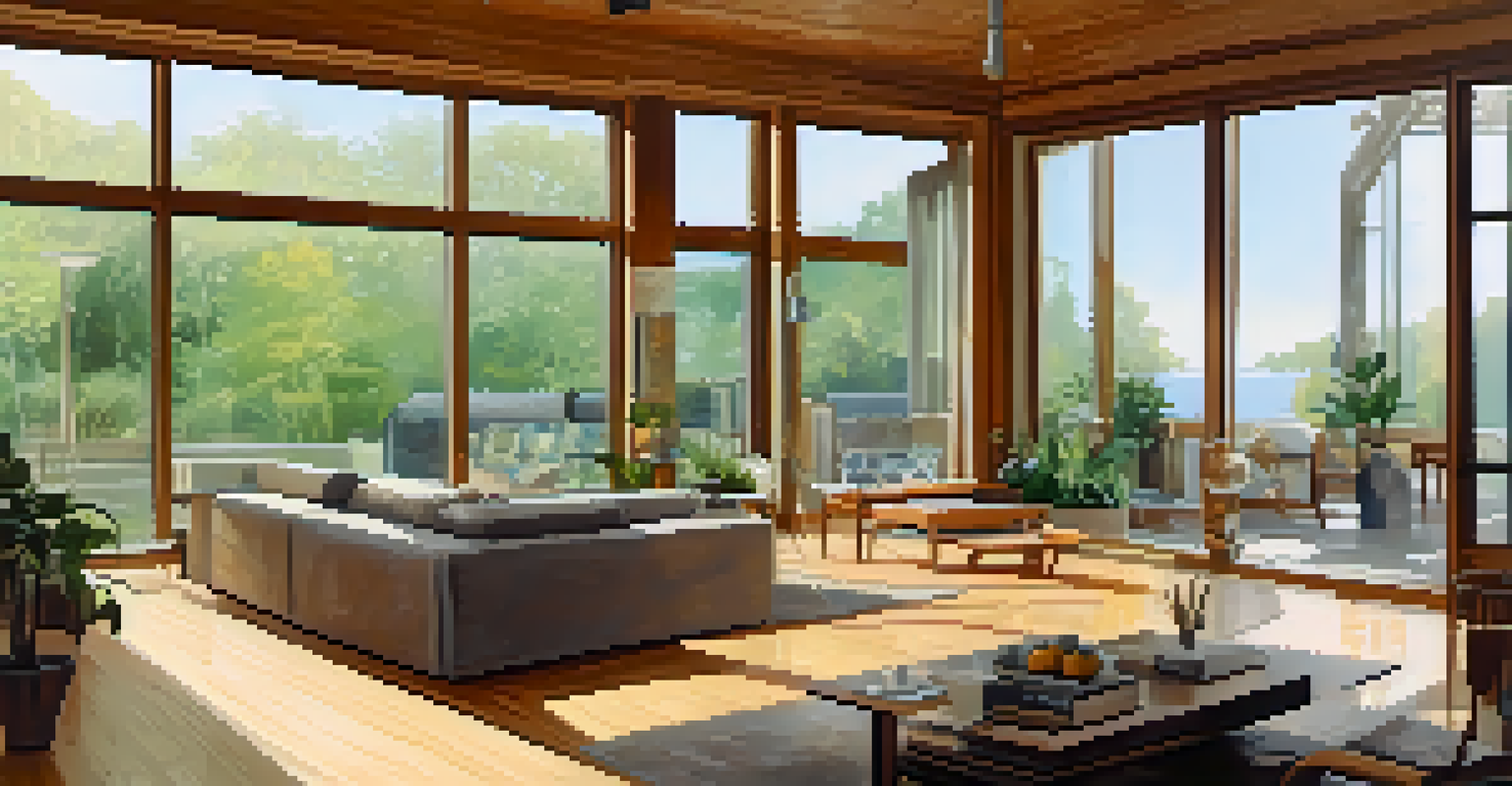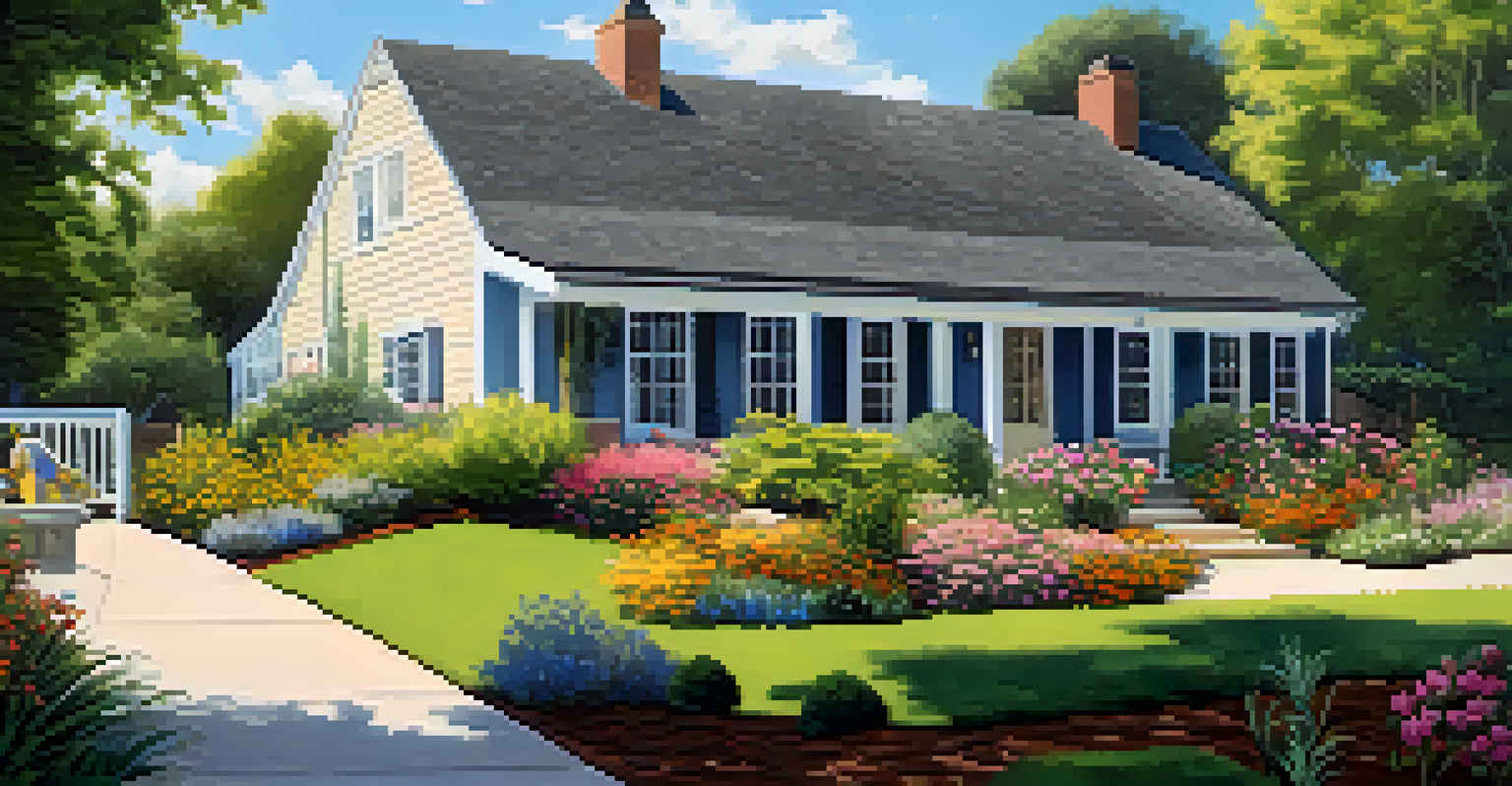The Importance of Energy-Efficient Home Design Principles

What is Energy-Efficient Home Design?
Energy-efficient home design focuses on reducing energy consumption while maintaining comfort. This approach encompasses various aspects, including materials, insulation, and the orientation of the home. By incorporating these principles, homeowners can create spaces that are not only functional but also environmentally friendly.
The greatest threat to our planet is the belief that someone else will save it.
For instance, strategically placing windows can maximize natural light and reduce the need for artificial lighting. This simple adjustment not only cuts down on energy use but also enhances the overall aesthetic of the home. Therefore, understanding the fundamentals of energy-efficient design is essential for homeowners who wish to create sustainable living spaces.
Ultimately, energy-efficient design principles provide a roadmap for building homes that harmonize with nature. This proactive approach benefits both the environment and the homeowners' wallets, making it a win-win situation.
Benefits of Energy-Efficient Home Design
The advantages of energy-efficient home design extend far beyond lower utility bills. One of the most significant benefits is the increased comfort throughout the year, as these homes maintain a stable indoor temperature. This means you won't have to constantly adjust your thermostat, leading to a more pleasant living experience.

Moreover, energy-efficient homes often have lower maintenance costs. High-quality materials and proper insulation reduce wear and tear, making your home last longer. This durability translates into savings over time, giving homeowners peace of mind about their investment.
Additionally, energy-efficient homes tend to have higher resale values. As more buyers become eco-conscious, properties with energy-efficient features are increasingly desirable. This trend makes investing in such designs not only a smart financial move but also a responsible choice for the planet.
Key Principles of Energy-Efficient Design
Several key principles form the backbone of energy-efficient home design. One of the most crucial is proper insulation, which helps keep the desired temperature inside your home, regardless of the weather outside. Insulation acts as a barrier, minimizing heat loss in winter and keeping the heat out in summer.
Energy efficiency is not just a goal; it's a way of life.
Another important principle is the use of energy-efficient windows. These windows can significantly reduce heat transfer, ensuring more comfortable indoor temperatures. By selecting the right type of glass and frame materials, homeowners can achieve significant energy savings.
Lastly, incorporating renewable energy sources, such as solar panels, can enhance a home's efficiency. Harnessing the sun's energy not only reduces reliance on fossil fuels but can also lower electricity bills, making it a sustainable choice for the future.
The Role of Sustainable Materials
Sustainable materials play a vital role in energy-efficient home design. By choosing materials that are renewable or recycled, homeowners can reduce their carbon footprint significantly. For example, bamboo flooring is a popular choice due to its rapid growth and durability, making it an eco-friendly option.
Additionally, using locally-sourced materials can further decrease energy consumption associated with transportation. When materials are sourced closer to home, it minimizes the environmental impact, promoting a healthier planet. This practice also supports local economies, creating a win-win scenario.
Incorporating sustainable materials not only benefits the environment but also enhances the home's overall aesthetics. Many sustainable materials offer unique design elements, making your home stand out while being environmentally responsible.
Importance of Natural Lighting
Natural lighting is a fundamental aspect of energy-efficient home design. By maximizing daylight, homeowners can reduce their dependence on artificial lighting, leading to significant energy savings. Large windows, skylights, and open floor plans can help achieve this goal.
Moreover, natural light has psychological benefits, enhancing mood and well-being. A well-lit home feels more welcoming and spacious, creating a pleasant atmosphere for residents and guests alike. This connection between light and emotional health is a compelling reason to prioritize natural lighting in design.
Finally, a well-designed home that incorporates abundant natural light can reduce reliance on heating and cooling systems. This not only saves energy but also prolongs the lifespan of HVAC systems, ultimately leading to lower maintenance costs.
Energy-Efficient Heating and Cooling Systems
Choosing the right heating and cooling systems is essential for energy-efficient home design. High-efficiency systems, such as heat pumps or modern furnaces, use less energy while providing the same level of comfort. This efficiency translates into lower monthly utility bills, allowing homeowners to save money.
Additionally, smart thermostats can optimize energy use by learning your schedule and adjusting settings accordingly. These devices provide convenience and help reduce energy waste, ensuring that your home remains comfortable without unnecessary costs.
Incorporating zoning systems allows homeowners to control temperatures in different areas of the house independently. This way, you can heat or cool only the spaces you use, further enhancing energy efficiency and comfort.
Creating an Energy-Efficient Landscape
Landscaping can significantly impact a home's energy efficiency. Thoughtful planting can provide shade, reducing the need for air conditioning during hot months. Trees and bushes strategically placed around the home can block harsh winds in winter, enhancing energy savings.
Moreover, using native plants in landscaping can minimize water use and maintenance costs. These plants are well-suited to the local climate, requiring less irrigation and care. This not only saves resources but also contributes to local biodiversity.

Creating an energy-efficient landscape is about harmony with the environment. By choosing plants that work with nature rather than against it, homeowners can create beautiful, sustainable outdoor spaces that complement their energy-efficient homes.